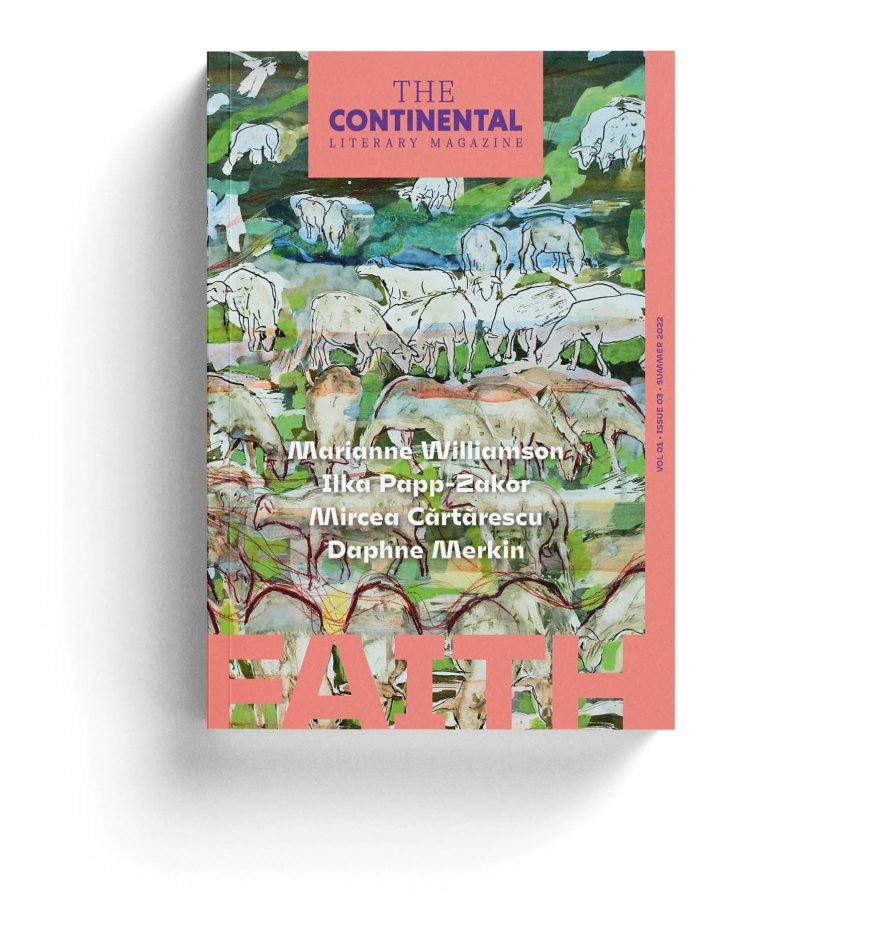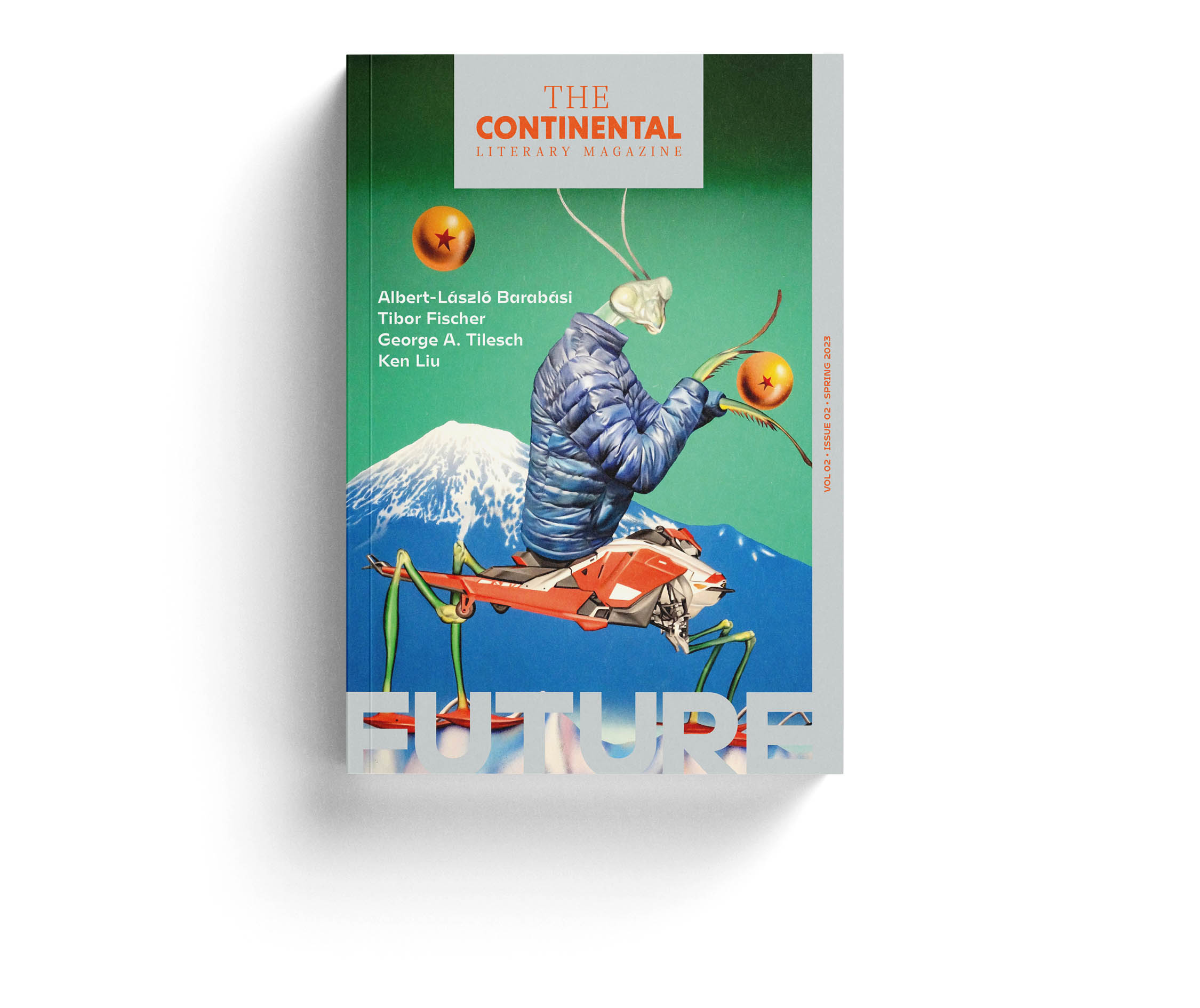
6th December 2022
Non-Fiction
6 minutes read
Spirits Old and New
translated by Tadeusz Rieckmann

6th December 2022
6 minutes read
It’s an unusual sculpture, standing at its designated place close to the table where the family has its meals.
These kinds of figureheads were common pieces of furniture in many regions of Siberia, for instance in the dwellings of the members of the Nanai tribes, which settled on the banks of the Amur River, along the border to China. The knowledge of being at the mercy of the powerful, ubiquitous nature and the infinite celestial void above, with its waters, weathers, and winds, determined the lives of these people.
This was the home of shamanism.
Bulky, roughly hewn tree stumps or thick cut branches are found in the huts of poor families and elaborately carved and painted ones in the houses of the wealthy. 30 to 60 centimeters in height, they depict a torso or, more often, a head.
Their most striking feature is the mouth. It is either milled into the wood as a round or triangular depression or the lips protrude from the surface and are sometimes painted with a vivid color.
Shamanism is convinced that the world is omniferous. Everyone and everything is interconnected and interdependent. Both the living and the dead are constantly and simultaneously present, if in different states of being. Seemingly lifeless things like rocks are just as much a part of living nature as a tree, and these things all communicate with one another, help one another, keep one another alive. A shaman, male or female, is someone who has trained their sense of perception of this other world and is able to establish contact between those who once lived and those who are living now. This is not limited to humans. All beings are equal. The Nanai do not want to label this knowledge “religion.” On the contrary, they emphatically reject the term.
Since ordinary people do not have immediate contact with those other existences, the wooden sculpture is a means.
The airy, invisible world of spirits dwells and finds form within it.
The spirits of departed ancestors are not any better than their living descendants, and they have all kinds of strengths and weaknesses. Death dos not change that, and why would it? The person in question has simply departed for another place. Thus, a spirit may well feel misunderstood. May well be disgruntled. May well feel that they are not being given the respect befitting them. They may be in a good or bad mood, may have happy days or gloomy days. One is wise to stay on good terms with them. To flatter them. To give them a task so that they feel needed. And to make absolutely sure to let them partake in the family’s daily meals.
And suddenly we understand why the mouths of the sculptures are so dark. At every meal, before everyone digs in, the master or the lady of the house dips his or her fingertip into the bowl and gently touches the wooden figure’s lips with it. When there is cause for celebration, it is a drop of spirit.
If for some reason every member of the household has business elsewhere, an extra portion should be provided, along with a saying: “I entrust you with the task of guarding the house and the animals, not letting any intruders in, and preventing a fire.”
It took a while for the Russian Revolution to reach the remote areas of Siberia. When it finally came storming in with her mounted commissars and roaring truck engines, it threw everything that had anything to do with tradition into utter disarray. “Enough with your superstitions!
Religion is the opium of the masses!
Away with this frippery! Into the fire with it!”
Word spreads quickly that the wooden family members are in for it now. No one quite understands what is happening, but suddenly everyone is on their feet. The women intuitively know what needs to be done. Many a figure is hastily buried in the root cellar, the garden, or the forest. Others, especially the simple, roughly hewn ones, are tucked away as if they were merely chunks of wood on the pile of logs for the fire. One of them ends up, at the last minute, being dumped in the outhouse behind the hut as the Soviet forces are busting through the front door.
But in the end, they didn’t come just to take the idols from the illiterate masses and teach them to read and write. They should understand! Enlightenment is the key with which to transform a primitive, dull mind into a true soviet man. In lectures inspired and inspiring, they proclaim the dawn of a new era, the reign of a new spirit.
One day, a truck comes to the village. Strange bits of equipment are unloaded from it, and a film is projected onto a white screen. The audience is terrified, speechless, fascinated. At the end of the film, huge color portraits mounted on posterboard are passed out, portraits of the new leader, who a moment earlier was being frenetically cheered on the screen, along with the admonition: “He deserves a place of honor in your home.”
Alright then.
The Nanai are a peaceful people, and they are also curious.
If this is the New Spirit, we might as well take a look. The photographs are put in the spots which have now been freed up, and after a few weeks, the moustache has disappeared under a dark grease stain.
The commissars and their assistants have long since moved on to continue creating the new Soviet man across the vast country with Enlightenment and, if necessary, force.
One of the women is the first boldly to voice her suspicion: “Is it possible that the New Spirit doesn’t work all that well?”
“Ours doesn’t seem to work either,” a second woman says.
And when a third goes so far as to suggest that “the old one was better,” they all look into one another’s eyes knowingly. They agree, without saying a word.
One by one, the banished spirits are brought back from their exile.
They are carefully cleaned and given a great deal of attention. And yet for some time, they have to share their reclaimed spots with the cardboard rival, who still gets his fair share.
When the face of the new deity has blackened beyond recognition, it is given a new spot in the attic or the root cellar.
The descendants living today now have new gods, but that’s another story.







